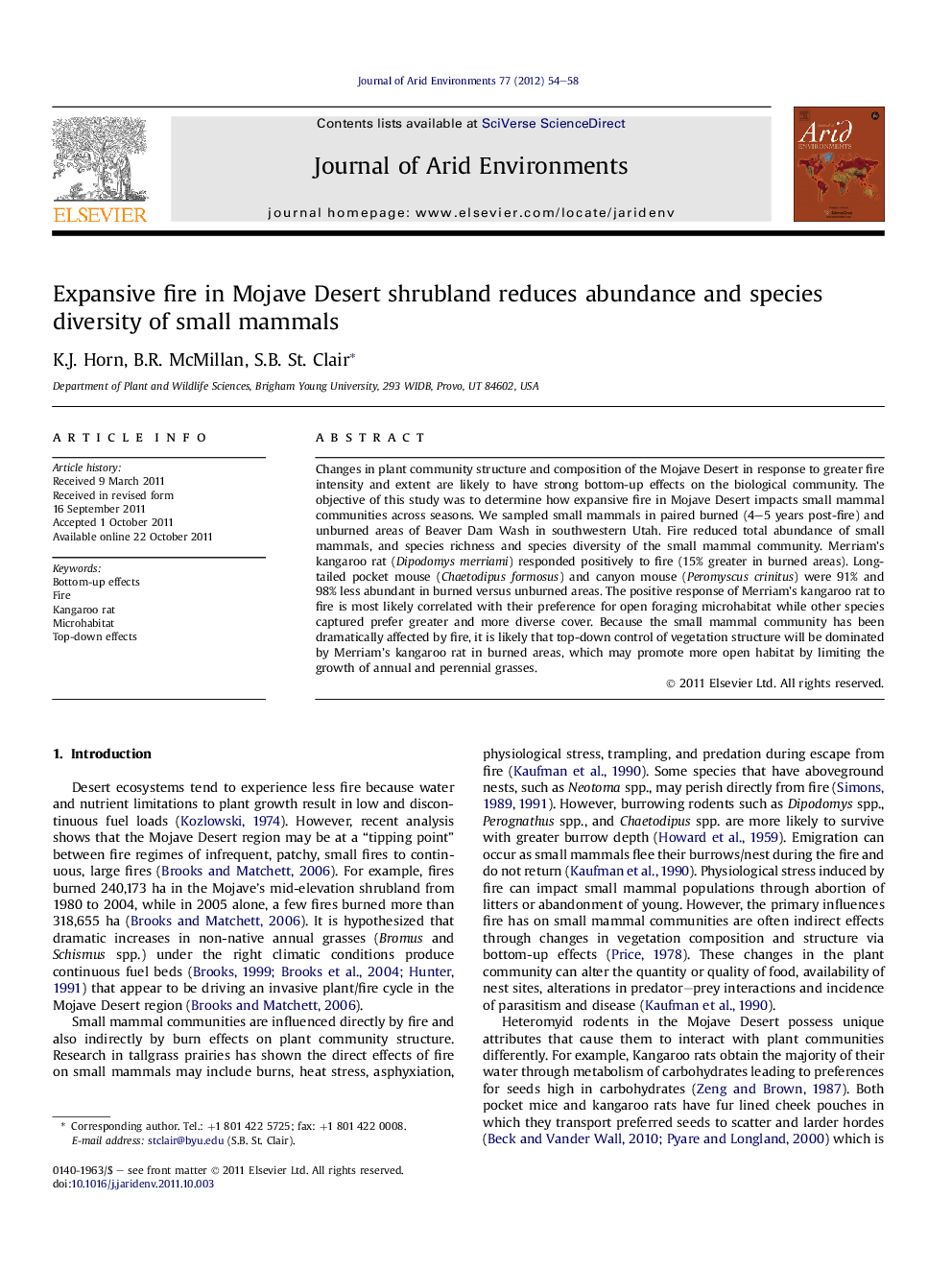| Article ID | Journal | Published Year | Pages | File Type |
|---|---|---|---|---|
| 4393486 | Journal of Arid Environments | 2012 | 5 Pages |
Changes in plant community structure and composition of the Mojave Desert in response to greater fire intensity and extent are likely to have strong bottom-up effects on the biological community. The objective of this study was to determine how expansive fire in Mojave Desert impacts small mammal communities across seasons. We sampled small mammals in paired burned (4–5 years post-fire) and unburned areas of Beaver Dam Wash in southwestern Utah. Fire reduced total abundance of small mammals, and species richness and species diversity of the small mammal community. Merriam’s kangaroo rat (Dipodomys merriami) responded positively to fire (15% greater in burned areas). Long-tailed pocket mouse (Chaetodipus formosus) and canyon mouse (Peromyscus crinitus) were 91% and 98% less abundant in burned versus unburned areas. The positive response of Merriam’s kangaroo rat to fire is most likely correlated with their preference for open foraging microhabitat while other species captured prefer greater and more diverse cover. Because the small mammal community has been dramatically affected by fire, it is likely that top-down control of vegetation structure will be dominated by Merriam’s kangaroo rat in burned areas, which may promote more open habitat by limiting the growth of annual and perennial grasses.
► We assessed small mammal community responses to fire in the Mojave Desert. ► Total abundance of small mammals responded negatively to fire. ► Dipodomys merriami was the only species to respond positively to fire. ► Species richness and diversity are negatively affected by fire. ► Fire effects on small mammals communities vary with season.
